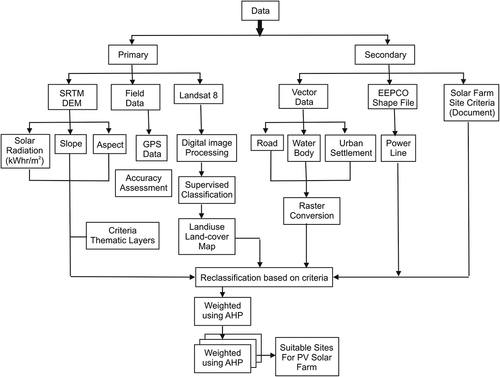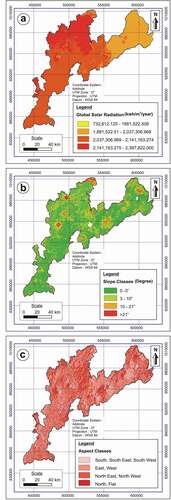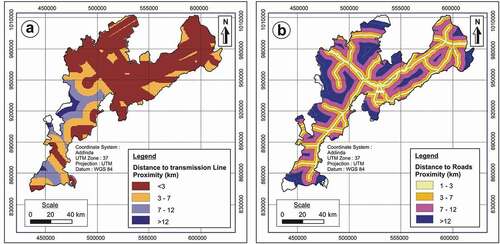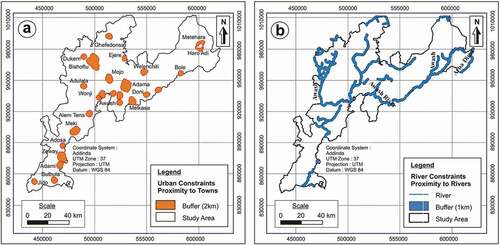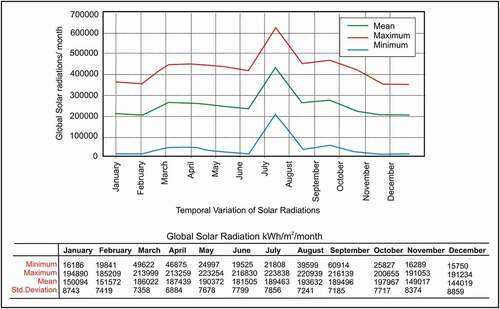Figures & data
Table 1. Data used for the present study.
Table 2. Nine-point importance scale.
Table 3. Suitability criteria and constraints for PV solar farm site selection.
Table 4. Factor criteria weights’ assignment and constraints used in the suitability model.


